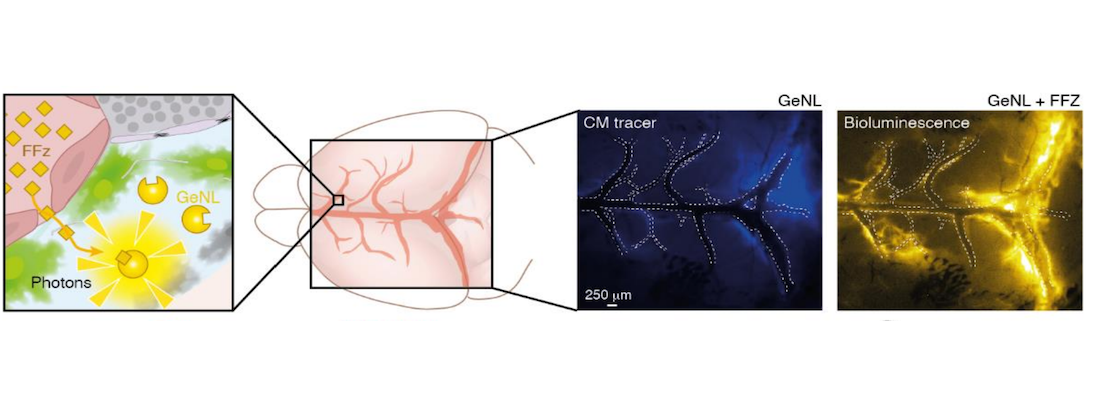Master’s project – Bioluminescence imaging of the Blood-Brain-Barrier
Blood vessels provide crucial infrastructure for the delivery of oxygen and nutrients throughout the body, and the term “blood–brain barrier” (BBB) is used to denote the unique characteristics of the blood vessels that vascularize the central nervous system. The BBB is not a single physical entity but rather the combined function of several physiological properties possessed by endothelial cells that limit vessel permeability. The BBB tightly regulates the movement of ions and molecules between the blood and the parenchyma and is thus critical for neuronal function and protection. The intricate properties that define the BBB are often altered in disease states, and BBB dysfunction has been identified as an important component in several neurological conditions. A deeper understanding of the BBB could pave the way for the identification of therapeutic targets for BBB repair as well as more effective drug delivery. In this project, we would like to study the dynamic changes in BBB permeability under both physiological and disease states to better understand BBB maintenance, disruption, and repair.
We are looking for a highly motivated student that is interested in advanced fluorescence imaging and neuroscience. The project is mainly in vivo and includes the use of a novel fluorescence assay based on a two-component bioluminescence system to visualize BBB barrier permeability changes over time. The same method was used in our recently published paper in Science (Møllgård et al., 2023).

(Møllgård et al. Science, 2023, Fig.S7 (modified))
Direct exchange of a small solute across the wall of the dural venous sinus and CSF. (A) Scheme of the arrangement of SLYM directly contacting the venous endothelial cells. In vivo bioluminescence assay to access direct transport of molecules from the venous blood to the CSF: Luciferase (GeNL) was injected into the CSF in cisterna magna and its substrate (FFz, 433 Da) delivered i.v.. The inverted Luciferase signal was used to outline the vascular compartment indicated by a dashed white line. A bioluminescence signal (photons) is generated when the substrate, FFz binds to luciferase (GeNL).The candidate should preferably have taken the FELASA animal course or be willing to take this prior to, or at the beginning of the thesis period. Since the assay is a relatively recent development, you also have a great opportunity to adapt the project to your own interests.
The project will be performed in the laboratory of Professor Maiken Nedergaard at the University of Copenhagen. It is a dynamic international research environment with more than 30 people working on various projects using state-of-the-art techniques to study the brain. In weekly journal Clubs, we discuss latest publications, data, results, and ideas with our partner lab in Rochester, USA.
The project will be supervised by Maiken Nedergaard. You would work on the project together with third-year Ph.D. student, Tina Esmail.The starting date is flexible. Please send your application including a short CV and a short letter of motivation to Tina.
Tina Esmail - Center for Translational Neuromedicine - Division of Glial Disease and Therapeutics - University of Copenhagen
